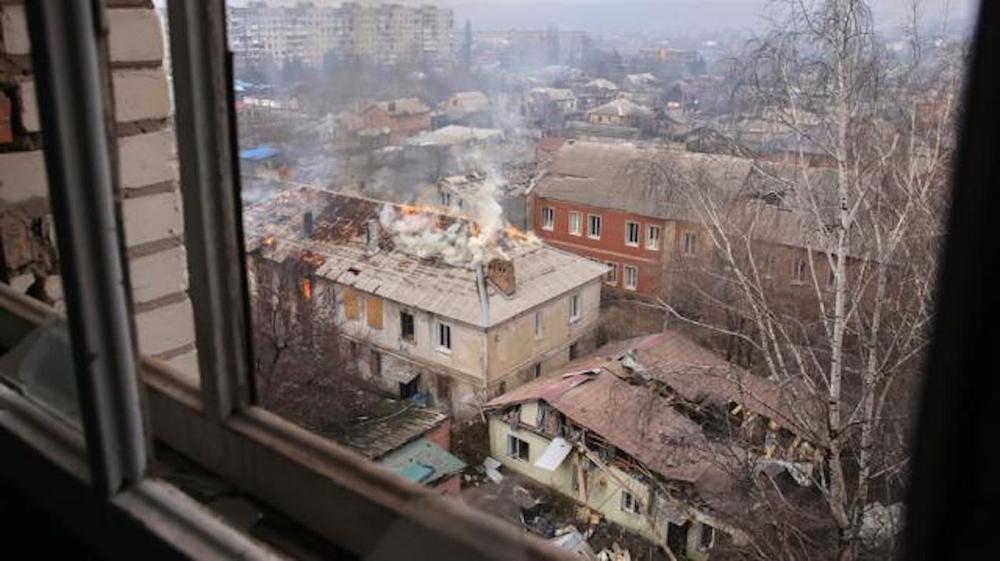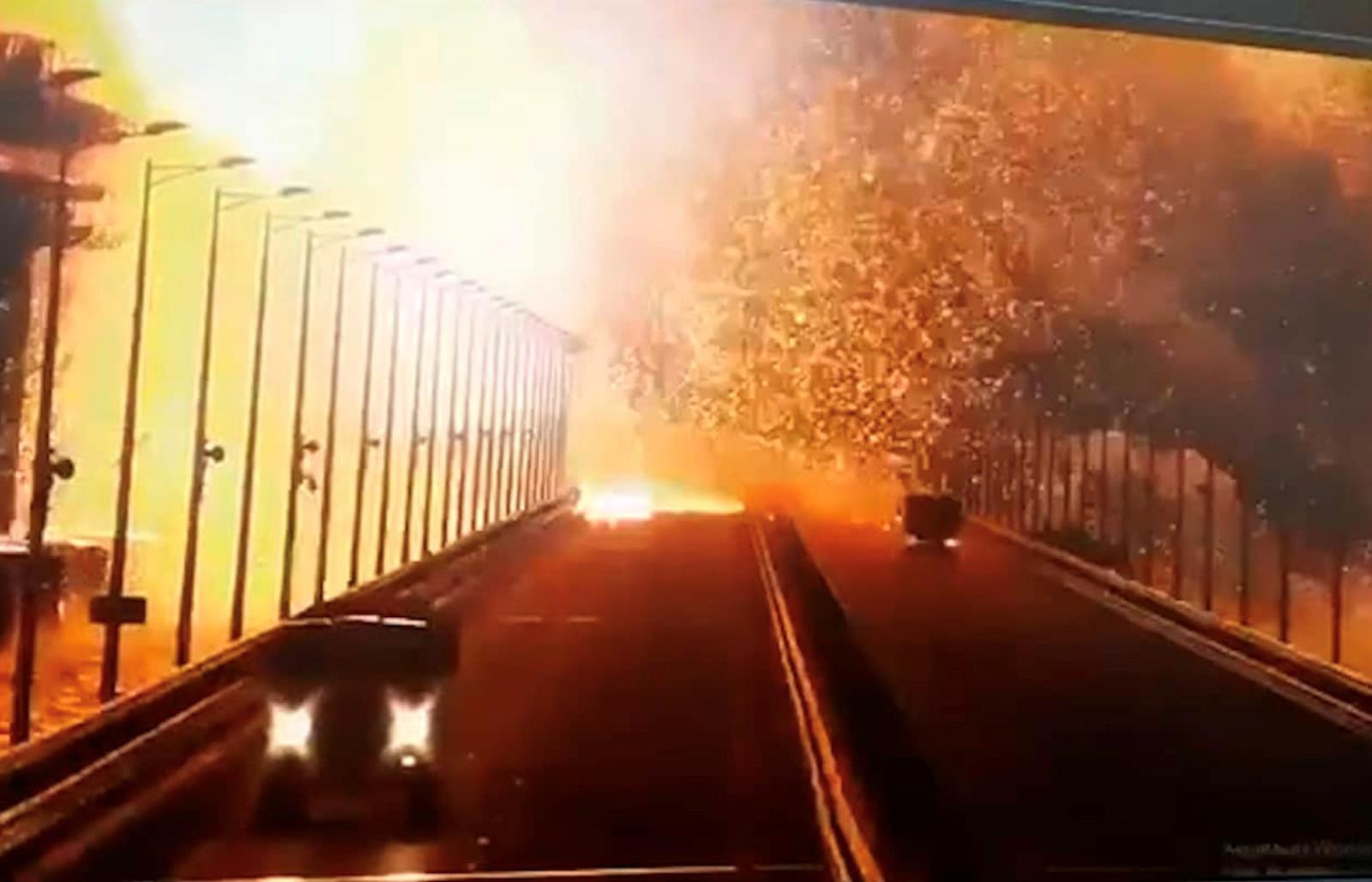(MENAFN- Asia Times) Ukrainian forces are pulling out of Bakhmut and the battle for the small Donetsk city is nearly finished. So what happens next?
There appear to be two stages to the Bakhmut pullout. The first started perhaps a month ago, though that isn't certain. The troops pulled out comprised foreign fighters and Yellow Armband troops.
The Russians say they have not seen any foreign fighters for about a month. Most of these were said to be from Georgia and Abkhazia. (Abkhazia is the area in Georgia carved out by the Russians and declared an independent entity.)
The Yellow Armband troops are professional and well-trained Ukrainian“heavy” military units. They have mostly been used on the flanks protecting the city of Bakhmut, trying to stop the Russian encirclement.
Within the city are so-called Green Armband troops. They are not well trained and are mostly recent conscripts. Mainly they carry small arms, which they fire from buildings and other covered positions. Many of them are underage or, alternatively, overage.
According to yevgeny prighozin , head of the Wagner Group paramilitary organization, the Green Armbands are starting to leave the city, having already pulled out from most of the eastern parts. Reports say they are either using a country road or walking across farm fields.
As it now stands, the end of the battle is at most a few days away, although the Ukrainians have launched a counteroffensive to the west and south of a town called Ivanivske. The operation may be meant to hold off a wider encirclement of Ukrainian forces that the Russians appear to have launched.

Destruction in Bahmut. Image: Screengrab / NDTV
The Yellow Armband Ukrainian forces trying to relieve Ivanivske are deploying a number of infantry fighting vehicles, but so far few if any tanks. Whether Ukraine's army can actually hold off a wider Russian operation remains to be seen.
But the Ukrainians are low on soldiers and ammunition, so it isn't clear they can sustain a hard hit if that's what the Russians intend to launch.
Up next: Crimea The US and NATO likely see the handwriting on the wall if the Ukrainians continue to try and hold territory in the Donbas region.
While the US thinks that Russia failed to succeed in its original objectives in the Donbas and in forcing a governmental change in Kiev, the long-term picture looks troublesome as the Russians have not only improved their tactics but also appear willing to pay the price and grind down Ukraine's army.
Likewise, it is by now clear that it will take more than a few years in the US and Europe to rebuild ammunition and equipment stocks, while the Russians seem to have put their defense manufacturing on a full-time, day-and-night basis to bring supplies to the front.
There are two key signals of a possible US-NATO change in strategy that are perceptible if we understand that NATO, at least so far, does what the US says it needs to do.
New deliveries of special types of long-range ammunition to Kiev are the first signal. The second is the publicized switch by Under Secretary of State for Political Affairs victoria nuland to favoring a refocus on retaking Crimea in a new Ukrainian offensive.
Nuland's view is not supported fully by the State Department or the Pentagon, largely because of concern Russia may choose to attack Western supply lines in retaliation, leading to a broader war in Eastern Europe, starting with Poland and Romania.
Both Poland and Romania, one should recall, are historical Russian stomping grounds. Joseph Stalin decided to support the ribbentrop-molotov pact in August 1939 because the Soviet leader saw it as giving him part of Poland and Romania's oil fields.
There is a famous story that circulated during the Cold War about a Polish soldier facing an invasion by Russian tanks on one axis and German tanks on the other. Standing there with one antitank weapon, what should he choose? Deciding to fire on the Russian tanks, the Polish soldier supposedly says,“Business before pleasure.”

Nuland appears to have trumped Blinken regarding an attack on Crimea. Image: Facebook
Fast forward to the present, US Secretary of State Antony Blinken is known to worry about a wider conflict but may well have lost out to Nuland, a major proponent of the Ukraine war who wants at a minimum regime change in Moscow.
The evidence that Nuland has won the argument starts with the fact Biden has announced a new long-range weapons program for ukraine and is also sending mobile bridging equipment that could help the Ukrainian army attack Russian forces in a Crimea offensive.
Such an operation itself would start with long-range glide bombs – joint direct attack munitions (JADAM), himars with long-range, ground-launched, small-diameter bombs (GLDSB) and artillery strikes. It would then develop into a land offensive against Crimea.
The operational problem is that this scenario would require fighter planes that can fly to high altitudes of around 30,000 feet before launching JDAMS, kits that fit on“iron” bombs to give them GPS guidance. But a bomb glides to its target, so to achieve standoff range high-flying aircraft are required.
This would require Ukraine to use its MIG-29s, but it has few of the fighters left. Thus the latest arms deliveries may include, in some form or another, Western aircraft probably flown by NATO pilots.
This would amount to a direct declaration of war, as both Blinken (who is against it) and Nuland (who is for it) understand. To launch such an offensive, for example as soon as this May, there's no alternative to using Western aircraft.
There is bipartisan congressional support for f-16s for Ukraine, although that support is for Ukrainians to fly them, which is unlikely in the next three months.
The Nuland threat to Crimea appears more and more to be a foregone conclusion: a US policy with existential implications for Europe and perhaps also for America.

An earlier Kerch Bridge blast was a highly sophisticated operation in Crimea and could presage a bigger operation. Image: Screengrab
The issue was decided by the new arms shipments (two separate announcements as late as March 3 US time). While no published decision has been made and Biden has been silent, the equipment being sent could only be intended for Nuland's offensive on Crimea.
If there were a public announcement of a decision supporting Nuland, Blinken would likely have a heart attack – but the US is sending long-range bombs and artillery as well as bridging equipment essential to attack Crimea. If such an attack is not envisioned, the Ukrainians don't need this kit.
Meanwhile, there seems to be very little coherent US opposition to the unfolding scenario of what could quickly become a general war in Europe.
stephen brye n is a senior fellow at the center for security policy and the yorktown institute . Follow him on Twitter at @stevebryen